Building facades play a crucial role in defining the aesthetic appeal and functionality of a structure. Serving as the outer shell of a building, facades provide protection from environmental elements, enhance energy efficiency, and contribute to the overall design and ambiance of a space. Whether it’s a modern skyscraper, a historic landmark, or a residential home, the facade is often the first thing that catches the eye and sets the tone for the entire building. When it comes to designing a building facade, architects and designers have a wide array of materials, techniques, and styles at their disposal. From traditional materials like brick and stone to contemporary innovations such as glass, metal panels, and composite materials, the options for building facades are virtually endless. Each material has its own unique characteristics, advantages, and limitations, allowing designers to create diverse and impactful facades that suit the specific requirements of a project. One of the key considerations when designing a building facade is functionality. In addition to providing weather protection and insulation, facades must also allow for natural light, ventilation, and views, while ensuring privacy and security for occupants. This requires careful attention to factors such as orientation, building orientation, site conditions, and local climate to optimize the performance of the facade and enhance the overall building performance. In recent years, sustainable design practices have become increasingly important in building facade design. Green building facades not only enhance the environmental performance of a building but also contribute to the health and well-being of occupants. Strategies such as green roofs, living walls, solar shading devices, and high-performance glazing systems help reduce energy consumption, improve indoor air quality, and create a more sustainable built environment. In addition to functionality and sustainability, aesthetics play a crucial role in building facade design.

.
 The facade is often the most visible and recognizable part of a building, making it a key element in defining the architectural style and character of a project. Whether it’s a minimalist glass curtain wall, an ornate historic facade, or a bold sculptural design, the facade has the power to make a powerful visual statement and create a lasting impression on viewers. In the realm of building facades, innovation plays a crucial role in pushing the boundaries of design and technology. Advancements in materials science, manufacturing techniques, and digital design tools have opened up new possibilities for creating dynamic and innovative facades that challenge traditional notions of what a building envelope can be. From parametric design to digital fabrication, architects and designers are exploring new ways to create facades that are not only visually striking but also highly functional and sustainable. One emerging trend in building facade design is the use of smart technologies to enhance the performance and functionality of facades. From dynamic shading systems that respond to changing sunlight conditions to integrated sensors that optimize energy consumption, smart facades are transforming the way buildings interact with their environment. By incorporating elements such as responsive lighting, self-cleaning surfaces, and integrated energy generation systems, smart facades are reshaping the way we think about building envelopes and their role in creating more efficient and sustainable buildings. In conclusion, building facades are much more than just the outer skin of a building – they are the interface between the built environment and the natural world, the canvas upon which architects and designers can express their creativity and innovation. By carefully considering factors such as functionality, sustainability, aesthetics, and technology, designers can create facades that not only enhance the performance of a building but also enrich the experience of those who interact with it. Whether it’s a sleek glass facade that reflects the surrounding landscape or a dynamic kinetic facade that responds to environmental conditions, building facades have the power to shape our cities, our buildings, and our lives in profound ways.
The facade is often the most visible and recognizable part of a building, making it a key element in defining the architectural style and character of a project. Whether it’s a minimalist glass curtain wall, an ornate historic facade, or a bold sculptural design, the facade has the power to make a powerful visual statement and create a lasting impression on viewers. In the realm of building facades, innovation plays a crucial role in pushing the boundaries of design and technology. Advancements in materials science, manufacturing techniques, and digital design tools have opened up new possibilities for creating dynamic and innovative facades that challenge traditional notions of what a building envelope can be. From parametric design to digital fabrication, architects and designers are exploring new ways to create facades that are not only visually striking but also highly functional and sustainable. One emerging trend in building facade design is the use of smart technologies to enhance the performance and functionality of facades. From dynamic shading systems that respond to changing sunlight conditions to integrated sensors that optimize energy consumption, smart facades are transforming the way buildings interact with their environment. By incorporating elements such as responsive lighting, self-cleaning surfaces, and integrated energy generation systems, smart facades are reshaping the way we think about building envelopes and their role in creating more efficient and sustainable buildings. In conclusion, building facades are much more than just the outer skin of a building – they are the interface between the built environment and the natural world, the canvas upon which architects and designers can express their creativity and innovation. By carefully considering factors such as functionality, sustainability, aesthetics, and technology, designers can create facades that not only enhance the performance of a building but also enrich the experience of those who interact with it. Whether it’s a sleek glass facade that reflects the surrounding landscape or a dynamic kinetic facade that responds to environmental conditions, building facades have the power to shape our cities, our buildings, and our lives in profound ways.
..
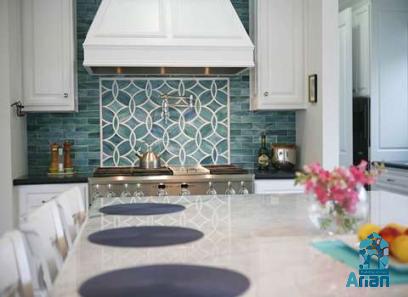 Building facades serve as the front face of a structure, providing an opportunity for architects and designers to showcase their creativity and vision. By carefully selecting materials, considering functionality and sustainability, exploring innovative design strategies, and embracing smart technologies, building facades can transcend their traditional role and become dynamic, engaging elements that enhance the overall building experience. One of the key aspects of building facade design is the selection of materials. Different materials offer unique qualities in terms of texture, color, durability, and performance. Traditional materials such as brick, stone, and concrete provide a sense of permanence and solidity, while modern materials like glass, metal, and composite panels offer transparency, flexibility, and a contemporary aesthetic. By combining different materials, textures, and finishes, designers can create facades that are visually rich, expressive, and contextually responsive. Functionality is another critical factor to consider when designing a building facade. Facades must not only protect the building from the elements but also provide natural light, ventilation, and views for occupants. In addition, facades play a crucial role in regulating energy consumption, managing heat gain and loss, and improving overall building performance. By integrating elements such as shading devices, high-performance glazing, and thermal insulation, designers can create facades that enhance occupant comfort, reduce energy costs, and promote sustainability. Sustainability has become an increasingly important consideration in building facade design. Green building facades incorporate strategies that reduce energy consumption, improve indoor air quality, and minimize environmental impact. Features such as green roofs, living walls, photovoltaic panels, and rainwater harvesting systems help buildings operate more efficiently and reduce their carbon footprint. By integrating sustainable design principles into building facades, designers can create healthier, more resilient, and environmentally responsible buildings that benefit both occupants and the planet. Aesthetics play a significant role in building facade design, as the facade is often the most prominent and visible element of a building.
Building facades serve as the front face of a structure, providing an opportunity for architects and designers to showcase their creativity and vision. By carefully selecting materials, considering functionality and sustainability, exploring innovative design strategies, and embracing smart technologies, building facades can transcend their traditional role and become dynamic, engaging elements that enhance the overall building experience. One of the key aspects of building facade design is the selection of materials. Different materials offer unique qualities in terms of texture, color, durability, and performance. Traditional materials such as brick, stone, and concrete provide a sense of permanence and solidity, while modern materials like glass, metal, and composite panels offer transparency, flexibility, and a contemporary aesthetic. By combining different materials, textures, and finishes, designers can create facades that are visually rich, expressive, and contextually responsive. Functionality is another critical factor to consider when designing a building facade. Facades must not only protect the building from the elements but also provide natural light, ventilation, and views for occupants. In addition, facades play a crucial role in regulating energy consumption, managing heat gain and loss, and improving overall building performance. By integrating elements such as shading devices, high-performance glazing, and thermal insulation, designers can create facades that enhance occupant comfort, reduce energy costs, and promote sustainability. Sustainability has become an increasingly important consideration in building facade design. Green building facades incorporate strategies that reduce energy consumption, improve indoor air quality, and minimize environmental impact. Features such as green roofs, living walls, photovoltaic panels, and rainwater harvesting systems help buildings operate more efficiently and reduce their carbon footprint. By integrating sustainable design principles into building facades, designers can create healthier, more resilient, and environmentally responsible buildings that benefit both occupants and the planet. Aesthetics play a significant role in building facade design, as the facade is often the most prominent and visible element of a building.
…
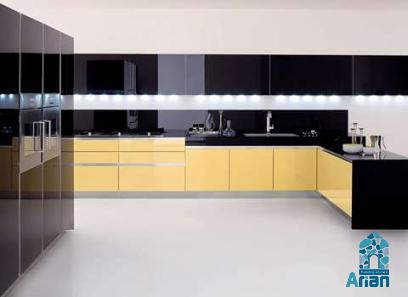 The aesthetic quality of a facade can influence the way we perceive and interact with a building, evoking emotions, conveying meaning, and creating a sense of place. Whether it’s a historical facade that reflects the cultural heritage of a place, a contemporary facade that embodies innovation and technology, or a minimalist facade that emphasizes simplicity and elegance, the design of the facade can shape our experience of a building and enhance its architectural identity. Innovative design approaches have opened up new possibilities for creating dynamic and expressive building facades. Parametric design tools allow designers to generate complex and intricate facade patterns that respond to site-specific conditions and functional requirements. Digital fabrication techniques enable the production of custom-designed facade elements that are precise, efficient, and cost-effective. By embracing these technologies, architects and designers can push the boundaries of traditional facade design and create visually striking, innovative facades that challenge conventions and inspire new ways of thinking about building envelopes. Smart technologies are transforming the way we think about building facades, turning them into interactive, responsive elements that adapt to changing environmental conditions and user needs. Integrated sensors, actuators, and control systems enable facades to adjust their properties in real-time, optimizing daylighting, shading, and ventilation to enhance occupant comfort and energy efficiency. By incorporating elements such as dynamic glazing, responsive facades, and intelligent building management systems, smart facades are revolutionizing the way buildings are designed, constructed, and operated. In conclusion, building facades are more than just a protective covering for a building – they are a canvas for innovation, creativity, and sustainability. By integrating materials, functionality, aesthetics, technology, and sustainability into the design of building facades, architects and designers can create dynamic, engaging facades that enhance the performance, appearance, and experience of a building. Whether it’s a historic facade that tells a story of the past, a modern facade that embraces the future, or a futuristic facade that redefines the possibilities of architecture, building facades have the power to shape our built environment in profound and meaningful ways.
The aesthetic quality of a facade can influence the way we perceive and interact with a building, evoking emotions, conveying meaning, and creating a sense of place. Whether it’s a historical facade that reflects the cultural heritage of a place, a contemporary facade that embodies innovation and technology, or a minimalist facade that emphasizes simplicity and elegance, the design of the facade can shape our experience of a building and enhance its architectural identity. Innovative design approaches have opened up new possibilities for creating dynamic and expressive building facades. Parametric design tools allow designers to generate complex and intricate facade patterns that respond to site-specific conditions and functional requirements. Digital fabrication techniques enable the production of custom-designed facade elements that are precise, efficient, and cost-effective. By embracing these technologies, architects and designers can push the boundaries of traditional facade design and create visually striking, innovative facades that challenge conventions and inspire new ways of thinking about building envelopes. Smart technologies are transforming the way we think about building facades, turning them into interactive, responsive elements that adapt to changing environmental conditions and user needs. Integrated sensors, actuators, and control systems enable facades to adjust their properties in real-time, optimizing daylighting, shading, and ventilation to enhance occupant comfort and energy efficiency. By incorporating elements such as dynamic glazing, responsive facades, and intelligent building management systems, smart facades are revolutionizing the way buildings are designed, constructed, and operated. In conclusion, building facades are more than just a protective covering for a building – they are a canvas for innovation, creativity, and sustainability. By integrating materials, functionality, aesthetics, technology, and sustainability into the design of building facades, architects and designers can create dynamic, engaging facades that enhance the performance, appearance, and experience of a building. Whether it’s a historic facade that tells a story of the past, a modern facade that embraces the future, or a futuristic facade that redefines the possibilities of architecture, building facades have the power to shape our built environment in profound and meaningful ways.
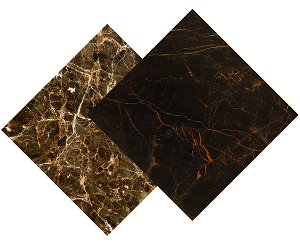




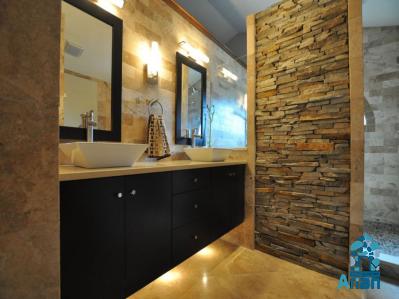
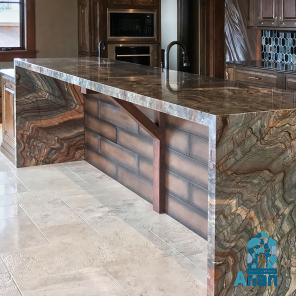
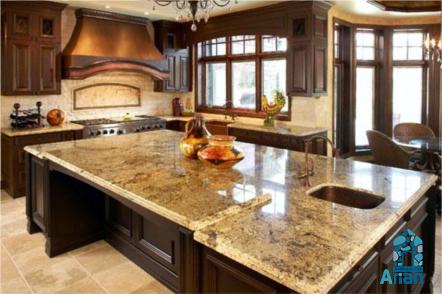



Your comment submitted.